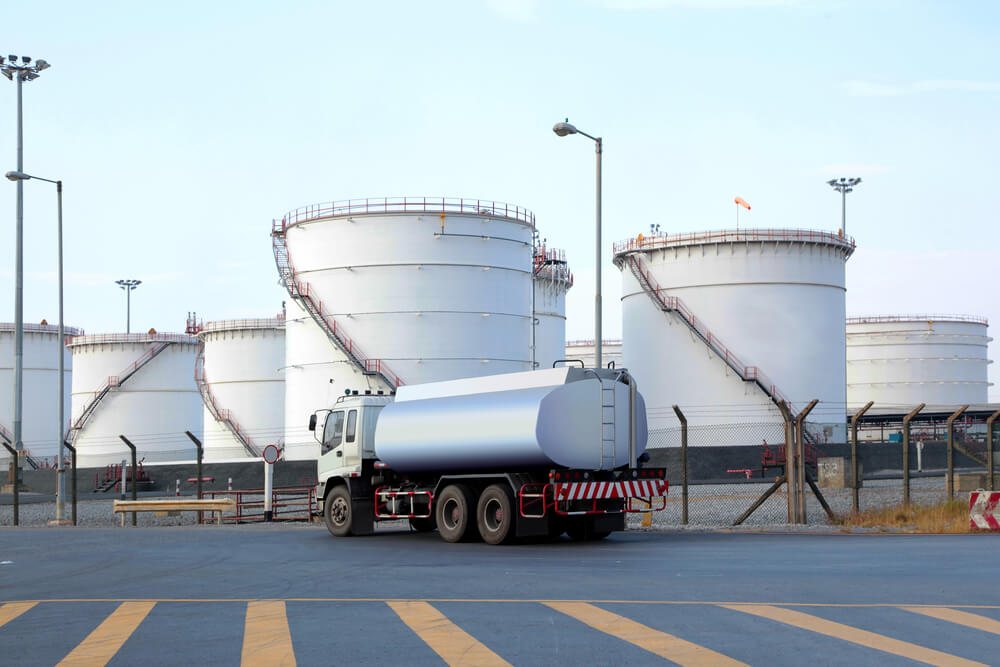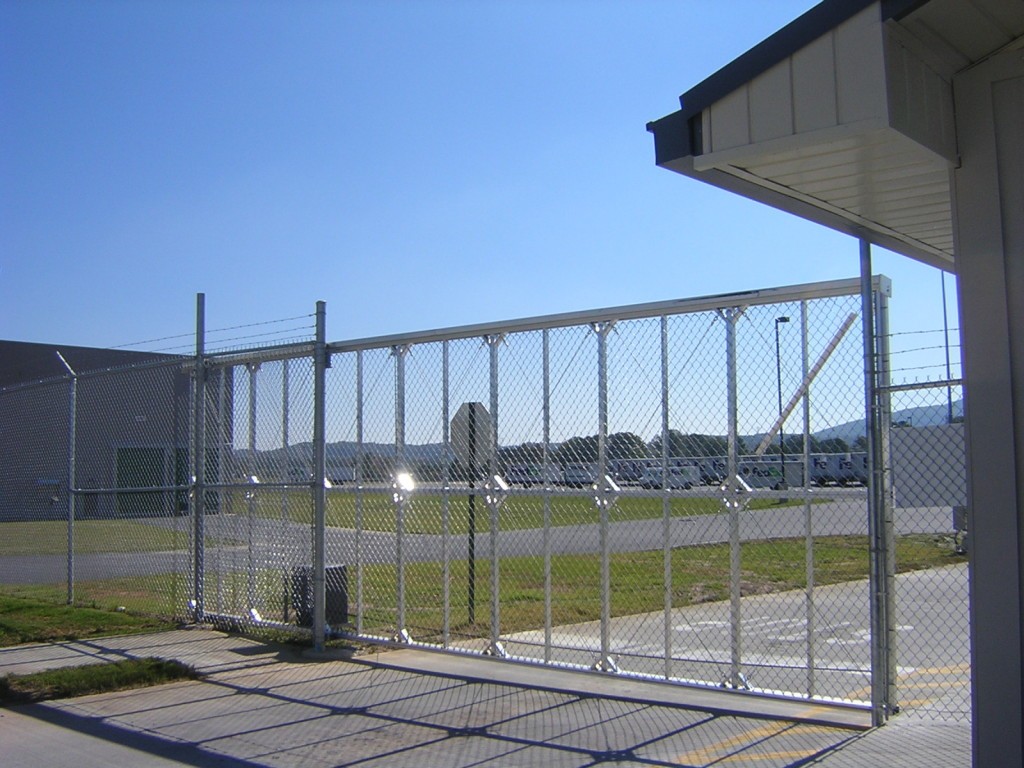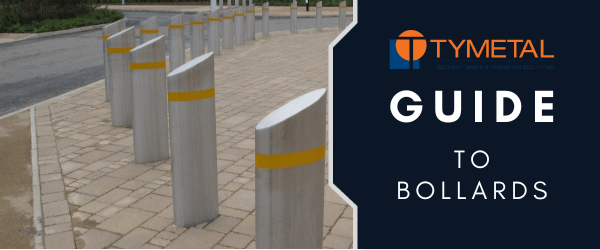
Protecting people from vehicle collisions with pedestrians, non-motorized vehicles, and buildings has become a growing concern in recent years, especially due to the increasing number of vehicle-building collisions. It is estimated that over 400 injuries occur annually as a result of these incidents, leading to more than 500 deaths in the United States alone. This alarming statistic highlights the importance of security measures for businesses and government facilities, as such accidents can endanger employees, damage infrastructure, and disrupt operations.
Many organizations opt for perimeter security solutions like fences, gates, or concrete walls. However, these options may not always be ideal, as they can restrict access for pedestrians and essential delivery, maintenance, and emergency vehicles. To achieve maximum security while still allowing pedestrian and limited vehicle access, many businesses and government facilities choose to incorporate bollards into their security strategy.
If you need to secure a perimeter against vehicles while still allowing pedestrian access, TYMETAL’s crash-rated bollards offer an excellent solution. To help you decide whether bollards are suitable for your next project, we have created a comprehensive guide that outlines the different bollard options available on the market and the various applications they can be used for.
What is a Bollard?
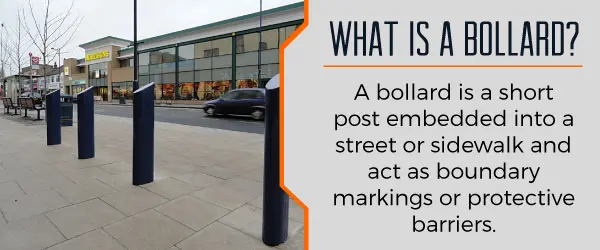
A bollard is a short post embedded in a street or sidewalk. These structures are commonly found in urban and building designs, serving as boundary markers or protective barriers. Originally made of wood or stone, bollards date back to the Roman Empire, where they were used to separate pedestrians from horse-drawn carriages. Today, they help manage traffic flow and protect pedestrians, buildings, and property from vehicle impacts.
Security Bollards Offered by TYMETAL
Carstopper 30 Single Shallow Removable Bollard
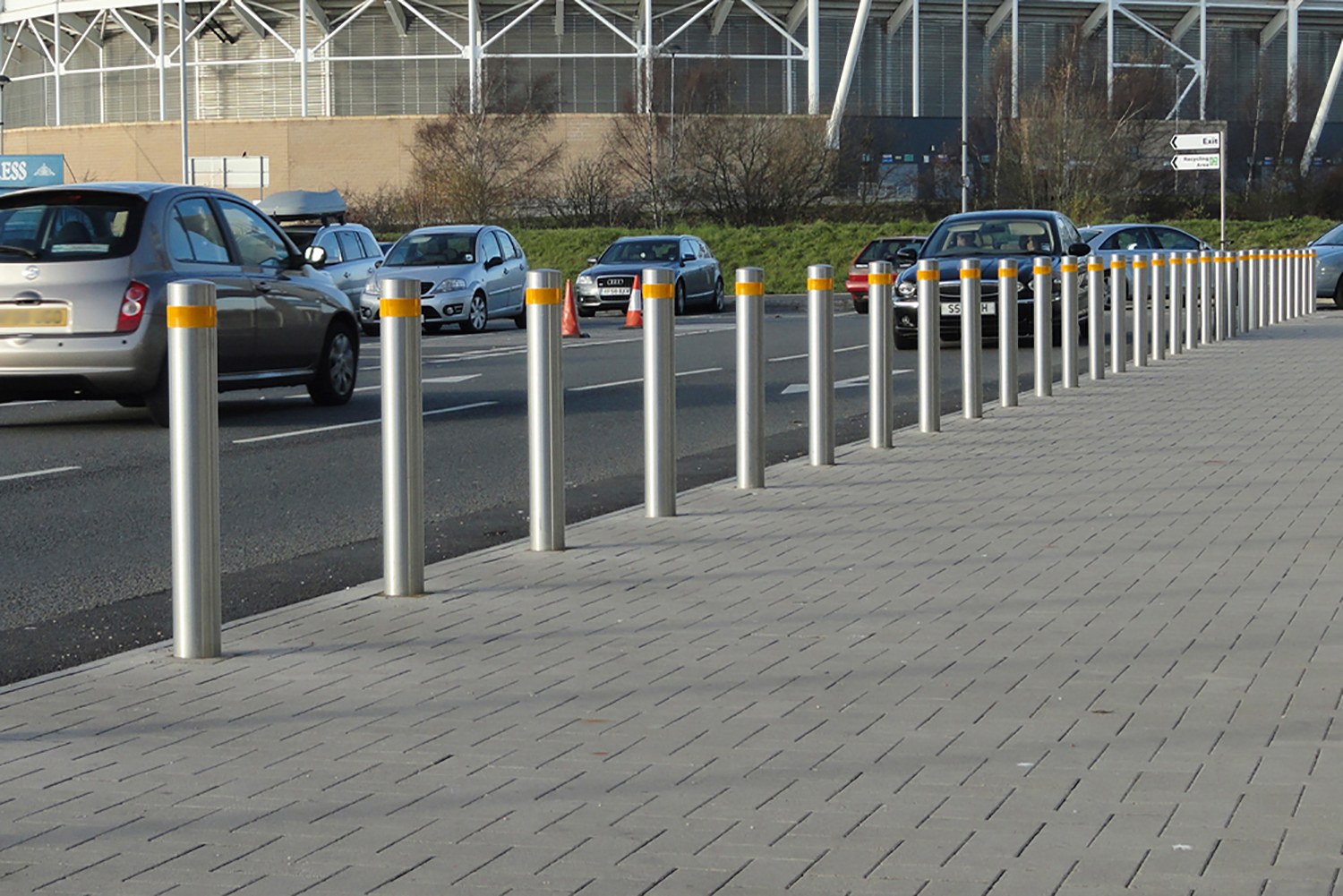
Truckstopper 3 Security Bollard
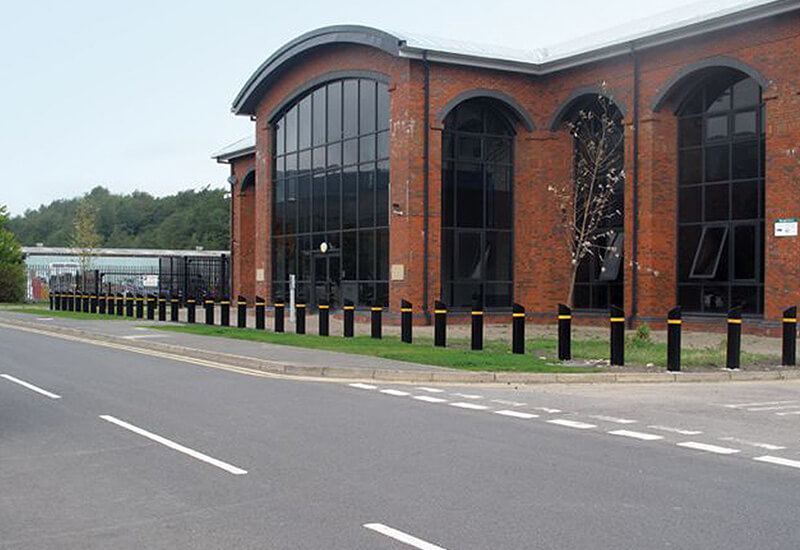
Truckstopper 5 Removable Bollard
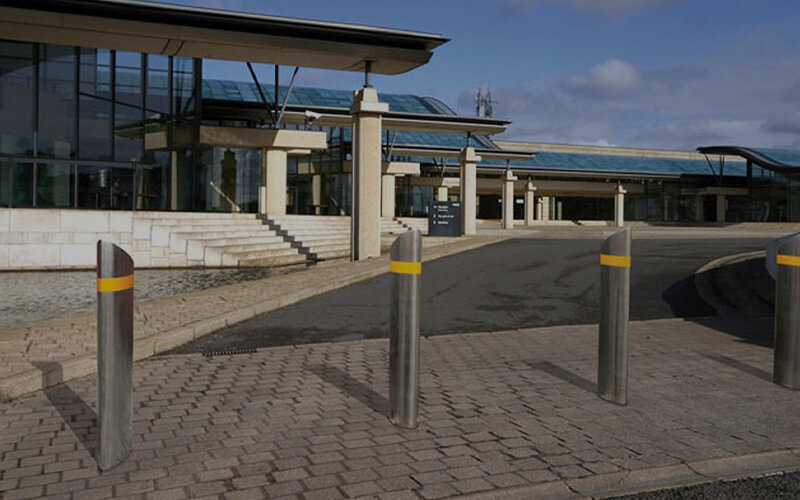
Truckstopper 6-30 Shallow-Mount Bollard
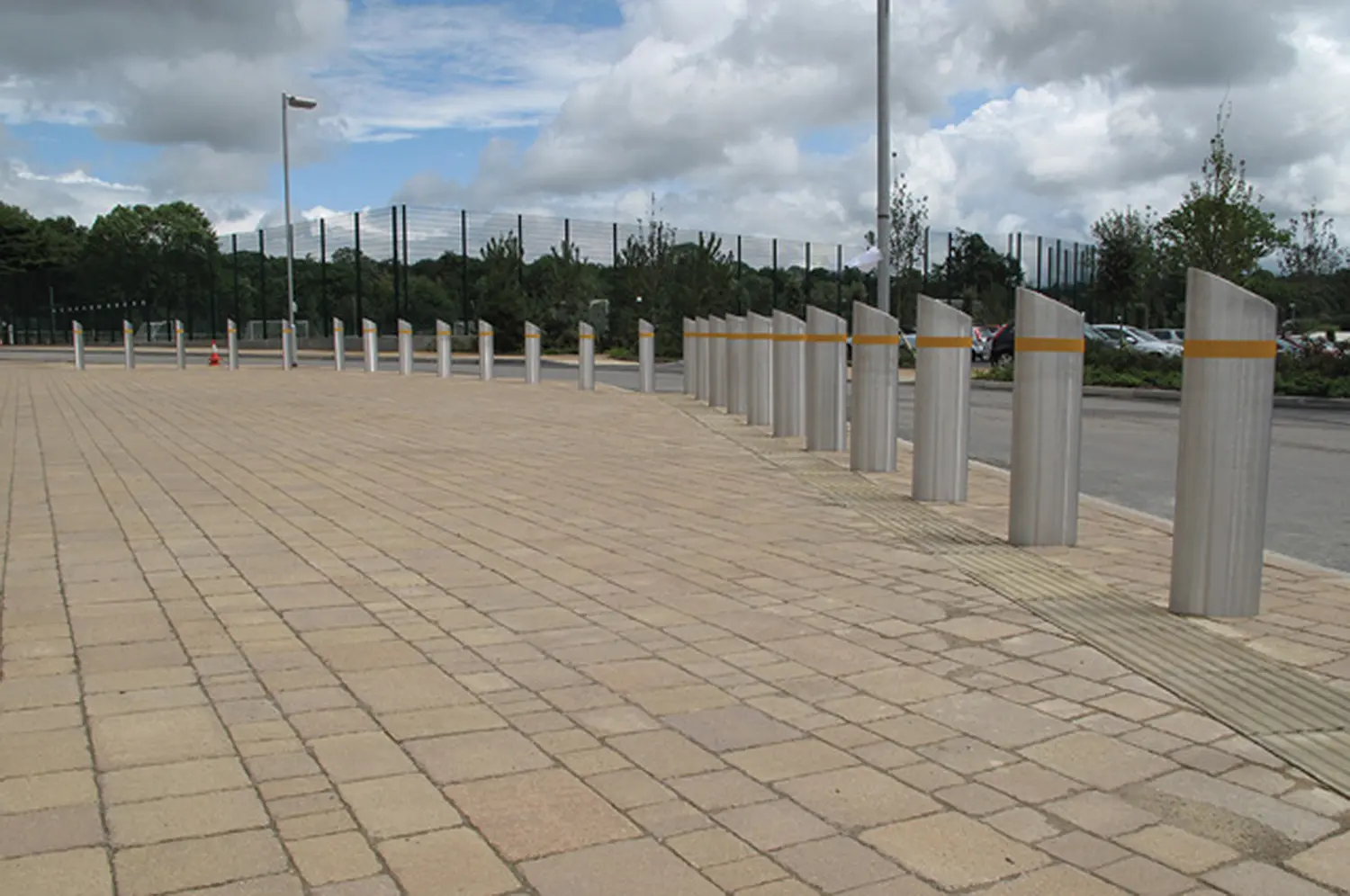
Truckstopper 7 Shallow Single Mount Bollard
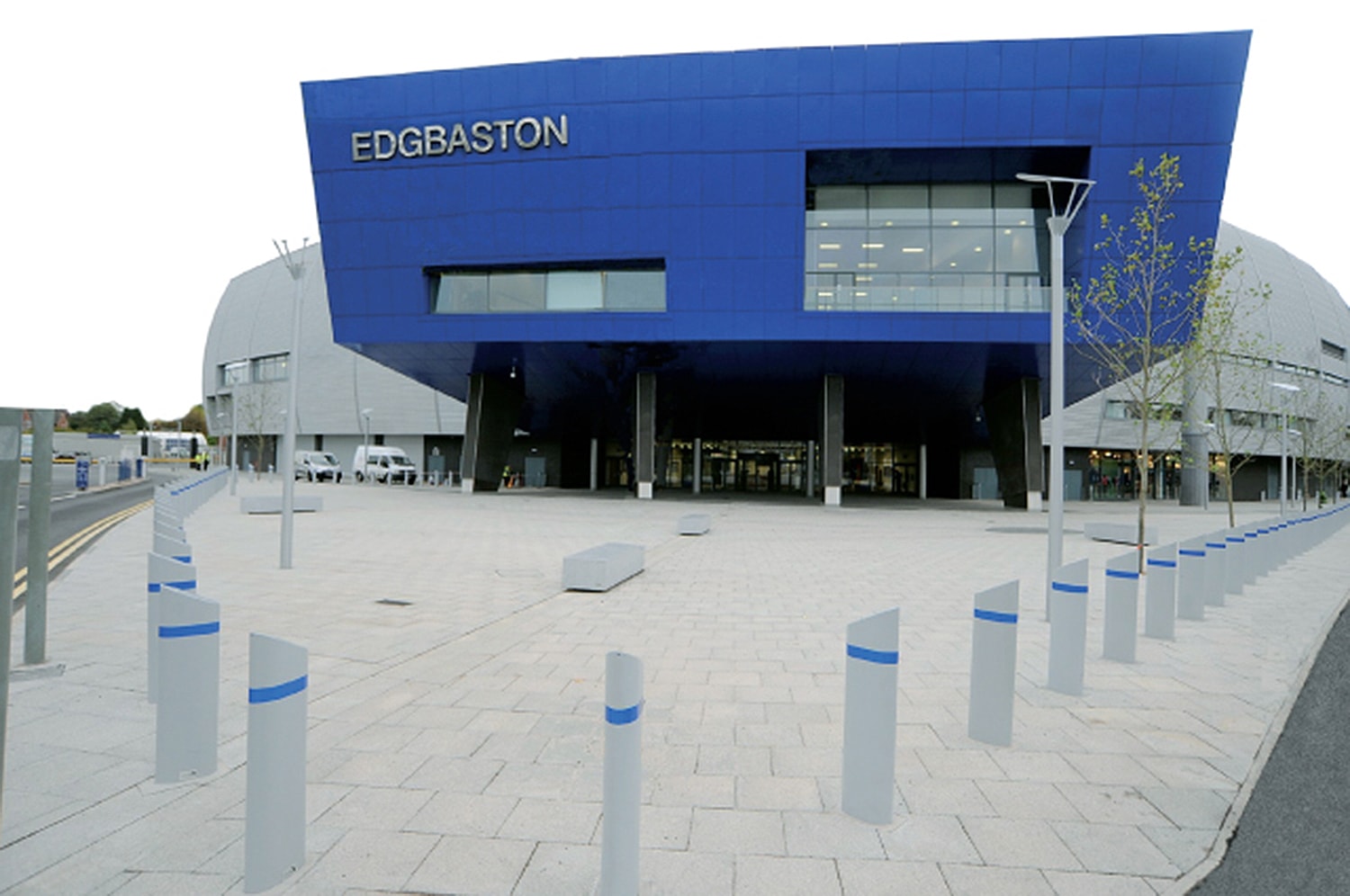
Truckstopper 9 Fixed/Removable Bollards
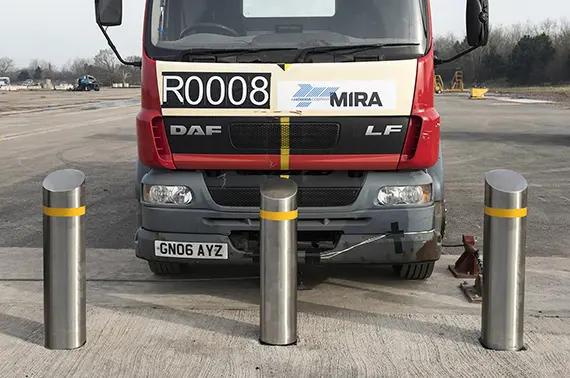
Truckstopper 10 Removable Bollard
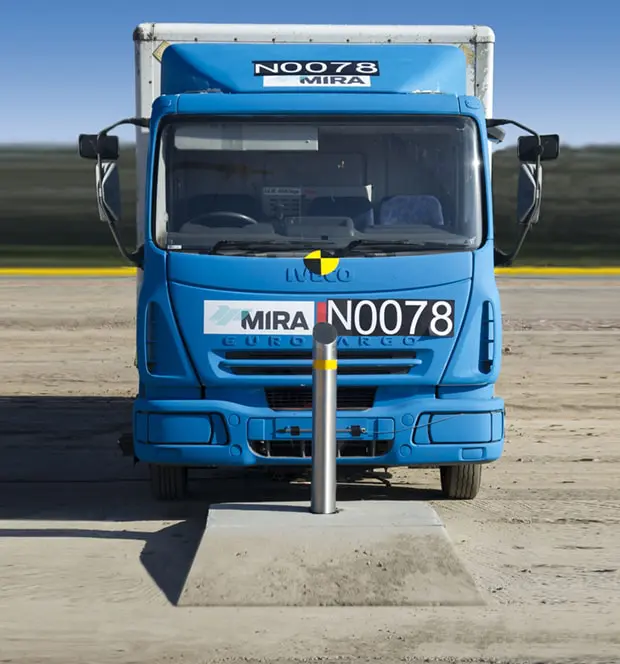
Types of Bollards
Bollards serve multiple purposes, from defining site perimeters to acting as safety features. They are often used to direct traffic, warn against potential threats, and enhance the aesthetic appeal of a location. Bollards can block off alleys, bike trails, and sidewalks to prevent collisions. They also provide a visual deterrent, signaling that an area may be under surveillance or protected by additional security. In many cases, non-crash resistant bollards are the most cost-effective option.
Non-crash resistant bollards can be decorative and feature lighting or other design elements. While they do not offer hard security, they provide a visible barrier that helps deter vehicle ramming and prevents minor collisions.
Crash Resistant Bollards
Anti-ram or crash bollards are engineered and tested to withstand vehicle impact. They are designed to resist the force of a typical car or truck traveling at specific speeds. Crash-resistant steel bollards are often used to protect government and military installations, which are more vulnerable to vehicular attacks. Airports, seaports, energy facilities, and commercial sites also use anti-ram bollards to safeguard pedestrians and employees.
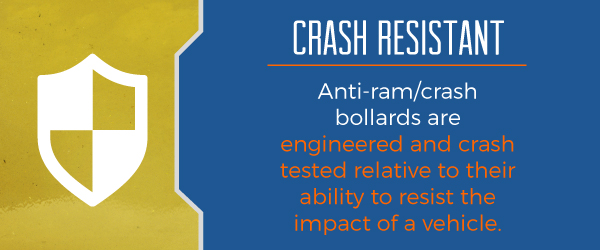
Shallow Mount Bollards
Recent advancements in bollard design have led to the development of shallow mount bollards. These bollards utilize a spring steel core, a technology developed by SafetyFlex, allowing them to flex and absorb high-impact forces. The shallow foundation, typically around 8 inches for M30/K4 systems and 16 inches for M50/K12 systems, makes installation easier and more cost-effective. This design allows for installation above existing utility lines and expands the possibilities for exterior security systems.
Shallow-mounted bollards offer faster and easier installation, reducing labor costs and minimizing disruption to the surrounding area. They are ideal for urban environments where deep excavation is not feasible. Additionally, they reduce the risk of damaging underground utilities and environmental concerns.
Retractable and Removable Bollards
Both crash-resistant and non-crash-resistant bollards can be removable or retractable. If periodic access is required, removable bollards remain a strong choice. They can be easily integrated into a security plan to allow construction, maintenance, or delivery vehicles to pass through when needed.
Bollards can be manually or mechanically removed or retracted. SafetyFlex bollards are known for their high crash-test ratings and shallow foundations. The flexibility of retractable or removable bollards makes them ideal for temporary situations, such as events, road closures, or seasonal restrictions.
Advantages of Removable Bollards
For occasional access control, removable bollards are the best option. They come with different locking mechanisms depending on the level of security required. They can be installed and removed quickly, leaving behind a covered ground sleeve that doesn’t impede or harm vehicles or pedestrians passing over it.
Best Uses for Removable Bollards
Removable bollards are effective for managing crowds and controlling vehicle access during events or temporary situations. They can be placed in parking lots when capacity is reached or used in streetscapes to keep vehicles away from areas with high foot traffic. They are also useful for blocking access roads in dynamic areas like worksites or college campuses.
Rising Bollards
Rising bollards are a type of retractable bollard that can control access when needed, similar to a security gate. Some operate using hydraulic power, raising and lowering to allow or prohibit vehicle access. However, TYMETAL bollards are manually operated, making them more durable in many instances. Typically made of solid steel, rising bollards provide reliable protection against ramming and excellent resistance to corrosion. An example of their application is controlling access at high-volume locations where vehicles enter and exit regularly.
Fixed Bollards
Unlike retractable and removable bollards, fixed bollards are intended for long-term protection. Depending on the model, they can be embedded or mounted onto a surface. These bollards are ideal for permanent facilities where the risk of a vehicle-based attack is high. Examples include airports, government buildings, schools, and retail stores. The advantages of installing fixed bollards include their long-term durability and ease of installation, making them one of the most popular choices.
Advantages of Fixed Bollards
Some areas should never allow vehicle access, and fixed bollards clearly indicate this restriction. Once installed, they provide long-term protection and ensure that certain zones remain inaccessible to vehicles or pedestrians.
Best Uses for Fixed Bollards
Areas that should never allow vehicles include government buildings, schools, airports, warehouses, stadiums, bike paths, and residential areas. Fixed-position bollards help protect pedestrians and prevent damage to buildings and equipment. Storefronts, such as department stores and grocery outlets, benefit significantly from bollards, as they often have constant pedestrian traffic near busy roads. Stop signs are useful, but bollards dramatically increase overall safety at all times.
Stainless Steel Bollards
While steel bollards offer aesthetic benefits, they also provide durability. Stainless steel resists rust, making it ideal for environments exposed to rain and snow. This material is easy to maintain, which can lead to lower long-term ownership costs. Stainless steel bollards are often made with a high percentage of recycled metal, appealing to environmentally conscious facility owners. They are an excellent choice for applications requiring both reliable protection and a visually pleasing appearance.
Bollard Crash Ratings
Bollards are crash tested and rated according to four common standards, which inform purchasers about the level of protection each bollard provides.
Department of State (DOS): Although the Department of State no longer certifies crash tests, this rating system is still widely recognized. DOS "K" ratings are based on the impact speed a crash barrier can withstand in a certified test involving a 15,000-pound truck traveling at three different speeds. K4 indicates a speed of 30 mph, K8 indicates 40 mph, and K12 indicates 50 mph. To achieve certification, the cargo bed penetration must not exceed 1 meter.
Department of Defense (DOD): Barriers meet DOD criteria, except for penetration. Three "L" designations describe penetration:
- L3 = 3 feet or less
- L2 = 3 to 20 feet
- L1 = 20 to 50 feet
The penetration of the cargo bed determines the "L" portion of the rating. For example, if a bollard is tested at 30 mph with a penetration of 3 feet or less, the rating would be K4L3.
ASTM F 2656-07: ASTM crash ratings are the current industry standard, measuring the type, speed, and penetration of the oncoming vehicle, and assigning a rating based on this information.
- M indicates a medium-duty truck of 15,000 pounds
- C indicates a passenger car of 2,430 pounds
- PU indicates a pickup truck of 5,070 pounds
- H indicates a heavy goods vehicle of 65,000 lbs
The number following indicates the speed of the crash test, at intervals of 30, 40, and 50 miles per hour. For example, a bollard certified for a test involving a medium-duty truck at 30 mph would receive a rating of M30. A "P" designation describes the distance of penetration upon impact:
- P1 = 1 meter or less
- P2 = 1.01 to 7 meters
- P3 = 7.01 to 30 meters
- P4 = 30 meters or greater
For example, a medium-duty truck traveling at 30 mph with a penetration distance of 1 meter or less would be designated "M30 P1".
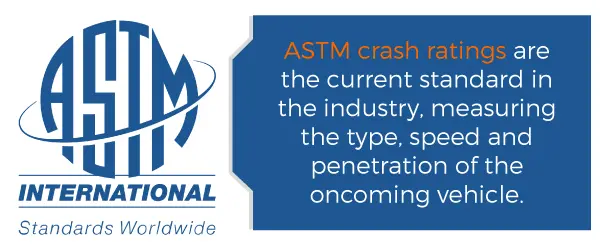
BSI PAS 68:2010: PAS 68:2010 is a British crash test standard similar to US standards. Safetyflex crash-rated bollards have been tested to the BSI standard. The speed of the vehicle is similar, but the weight of the tested vehicles is slightly higher. For example, a 7500 kg (16,534 lb) vehicle traveling at 48 km/h (29.83 mph) is comparable to DOS/DOD “K4†and ASTM “M30â€. If the penetration is 2.8 meters (9.2 ft), a comparable ASTM designation would be M30 P2.
TYMETAL's bollards are rated according to BSI PAS 68:2010, offering ratings similar to ASTM – M30, M40, and M50 to suit the security needs of your facility.
Bollard Applications
Bollards can be an effective method of perimeter security, preventing vehicles from accessing pedestrian sidewalks or restricted areas or colliding with buildings. Common bollard applications include the following:
Government Building Security: Given the threat of vehicle-based attacks, many government facilities use crash-rated bollards to restrict access. These bollards can be removed or retracted to allow authorized vehicles while keeping unauthorized ones out. This makes them a versatile and effective security measure.
Storefront Security: Crash-rated bollards are also used to prevent vehicle collisions with storefronts. Retail stores, restaurants, and commercial buildings are particularly vulnerable. By using bollards, businesses can protect their premises and customers from accidental or intentional collisions.
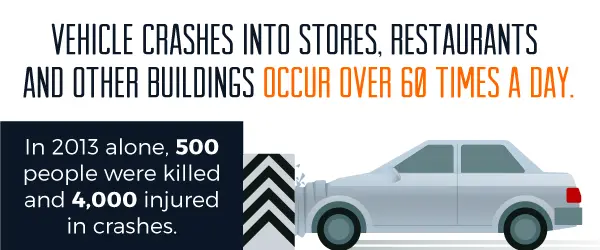
Traffic Control: Bollards are often used to create a clear separation between vehicles and pedestrians or cyclists. They help manage traffic flow, enforce traffic laws, and prevent collisions. Parking lot bollards are also part of this category, helping businesses control access to private parking areas.
Bollards can be used in public areas to prevent cars from entering spaces meant for pedestrians and non-motorized vehicles. Such areas include parks, playgrounds, schools, and bike trails, where an inattentive driver could accidentally cause a dangerous situation.
Why Choose TYMETAL for Security Bollards?
TYMETAL is proud to be the sole North American supplier of SafetyFlex vehicle bollards. SafetyFlex is a U.K.-based company providing high-security crash bollards and crash fencing favored by architects, engineers, and facility owners worldwide. Their patented spring steel design allows bollards to absorb massive amounts of force without needing a deep foundation, making them easier and less expensive to install.
These SafetyFlex security bollards were chosen as the premier barrier for the 2012 Summer Olympics in London. Since then, SafetyFlex has received the 2013 National Business Awards’ innovation award in the UK for their incredible bollard designs, setting the standard for the perimeter security industry. With our commitment to innovation and security, TYMETAL is proud to partner with SafetyFlex, offering a wide range of high-quality crash bollards and crash fencing for use in the United States.
TYMETAL has provided innovative security barrier solutions for over 30 years. Our dedication to comprehensive perimeter security has led us to offer the best customer service in the industry. Whether you need highly rated crash bollards or custom gate solutions, our team of experts will assist you before, during, and after your purchase and installation to ensure you are satisfied with your investment.
To learn more about TYMETAL and the security solutions we offer, please explore our wide range of products and designs. Included are the line of crash-tested anti-ram bollards and crash fencing discussed above. Drawings and specifications are available. If you cannot find what you need, feel free to contact us and speak with an experienced bollard professional. We are happy to assist with your perimeter security needs.
